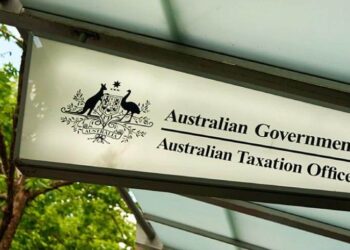Speaking at a panel event for the 27th Colloquium on Pensions and Retirement Research in Sydney on Tuesday, retirement review panellist Deborah Ralston said it was a misconception among some in the retirement income sector that the review would not include the family home.
“We talk in the [discussion] paper about the three pillars of the retirement system, and I noted a comment from someone saying you haven’t got the fourth pillar in there which is housing, but actually that falls under voluntary savings,” Dr Ralston said.
“So, the three key pillars are the age pension, compulsory super and voluntary savings, including voluntary super, the home, investment properties, financial and non-financial assets.”
However, Dr Ralston clarified that the review would not seek to make specific recommendations about tweaks to the retirement income system, but would be “drawing conclusions on the basis of the analysis that we collect”, including several pieces of independent research as well as community submissions.
Despite Treasurer Josh Frydenberg having ruled out including the family home in the pension assets test when announcing the retirement review in September, Council of the Ageing Australia chief executive Ian Yates said it was preferable that all options be on the table for the fact-based review.
“We do have a situation where there are a lot of fixed positions that are not necessarily driven by evidence, or where evidence is corralled around a predetermined position, and I don’t exempt some of my colleagues in advocacy organisations in the sector from that,” Mr Yates said.
“Our hope is that the review will lay the groundwork for community debate on major issues, even those that are politically sensitive.”
Mr Yates said the mindset of retirees was changing when it came to a possible partial inclusion of high-value properties in the pension means test.
“The place of the principal residence in the means test is a discussion that I think there is room for having more than people think,” he said.
“We regularly survey our constituency and we have asked them from time to time what their view is about including part of the value of a home that is worth more than the average in the pension assets means test.
“The constituency has responded 50-50 yes and no, so that tells me they are divided, but it also tells me there is a conversation to be had.”



Like many things with means testing, there is going to be lot of debate on thresholds. For example, is $250,000 an appropriate threshold for Division 293 tax or in other words being a higher income earner? Maybe to an average income earner, it may be but to what extent should the ‘high income earner’ pay more tax than what they already are?
So we come to the assessment of the family home? I agree with earlier thought that as we have a non-contributory system, there should be means testing of the family home over a certain threshold. What that threshold is likely going to raise a lot of debate but I can see the Government making it a high figure to start with (say $2 to $3 million) and then progressively bring that threshold down in subsequent budgets
If there were a cut off limit of say 1.5 million for exemption for the family home, it’s the WRONG way to do it. A cut off limit of say 1.5 million should apply to ALL voluntary savings, whether it is in a family home or ANY other form of investment or asset.
Not everyone has a home, not everyone has a million dollar plus home. There will never be equity. But people who don’t have a home do have a different threshold for pension purposes, so there is some adaptation for differing circumstances.
Some people pay their house off before retirement, but others spend during their working lives and use their super to pay off their home.
Our income is discretionary. We have a right to spend as we see fit.
The piggy bank to raid is the one identified by Labour: just stop franking credit refunds.
Let the credits soak up the tax (so no double-taxation), but NO refunds.
Maybe Grattan or other can investigate if this would be fairer than taxing the wealth accumulated in the family home?
PS) Look what that did for Labour’s unloseable election.
Reminds me of John Howard’s claim that there would never be a GST.
The problem is we will never have a fair system of taxation, social security payments, superannuation etc. while the family home is exempt. To apply these things in the same way for someone who does not own a family home and someone who has a family home worth many millions of dollars is just ridiculous.
Taxpayers (homeowners) are using after-tax money to buy their homes. Now the Government wants to swoop in and penalise these people. You have got to be kidding! Yes, there will hopefully be a property re-valuation upward, but the this will be a DOUBLE-TAX. If you are going to do this, then you have to allow each person to claim ALL “holding costs” on the assets over the lifetime of ownership and grant them a deduction for this, before you tax the increased market value – otherwise you are double-dipping. Once you start seeing the total cost for home ownership, you will understand the market value at retirement is not even recoupment of after tax money spent. Keep your mitts off!
I use after tax money to buy shares, by your logic should they also be exempt from tax and the asset test?
The pension exists to stop pensioners from living in penury, not to enable them to hand on million dollar properties to their children.
The eligibility tests are different for homeowners vs non-homeowners. Therefore a deemed amount is included for the home already. According to the centrelink webpage, this differential is currently $210,500.
I don’t know a single retiree or soon to be retiree who would agree to this. Who are these mysterious beings referenced by this panellist?
Absolutely, value of homes atleast above $1.5 million should be included for means testing.
Where I think there is scope for including the family home, and probably where the thinking lies, is in the multi-million dollar homes, whatever the threshold might be. For example someone living in a $5m home should use some of that equity to support themselves, whereas someone living in a $700k home should not have to. Most people with children would like to leave something to help them out but if every home were affected then many would not be able to. The divestment rules prevent people from early inheritance payments so they can get a government pension so “hiding” wealth in your exempt home should be treated the same way. Similarly allowing people to stashing tens of millions into an SMSF for the tax benefits is ridiculous. Put a limit on what is reasonable to live on which can have tax benefits and leave it at that.
Why does the Govt and its paid up advisers think they can continue to treat self funded retirees as an endless cash cow and endlessly penalise them for accumulating funds to not require a Govt pension. – Because they have saved money and the govt want to spend it to re-elect them selves
Over my dead body
Typical non-sensible Canberra psycho babble. They couldn’t lie straight in bed. The agenda is clearly, “How are we going to get away with taxing the Family Home”.
What a ridiculous statement. Who in their right mind, except if you don’t own your own home, would want to include your hard earned home in any assessment of assets. This is just softening up. Why does the Govt and its paid up advisers think they can continue to treat self funded retirees as an endless cash cow and endlessly penalise them for accumulating funds to not require a Govt pension. Crazy and short term thinking!